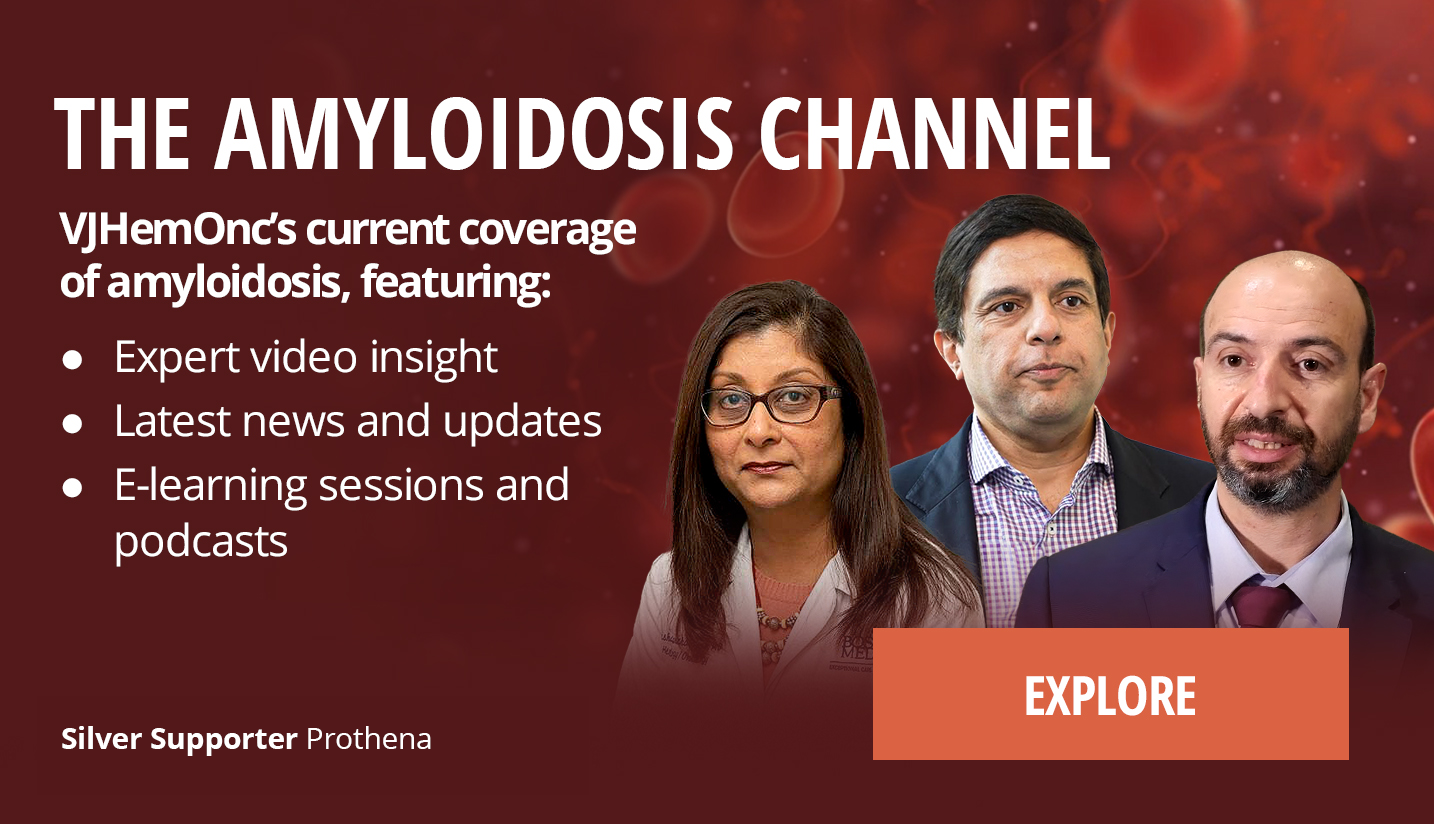AL amyloidosis patients are quite a special subgroup of patients because they’re really frail, obviously. They have affection of their amyloid in many organs and especially the patients who have heart affections are sick. Diagnosis is often late, too late, and then treatment strategies need to be individualized. So many of those patients receive a combination treatment up front, but when they don’t respond to that combination treatment, then evidence for a future treatment is very sparse...
AL amyloidosis patients are quite a special subgroup of patients because they’re really frail, obviously. They have affection of their amyloid in many organs and especially the patients who have heart affections are sick. Diagnosis is often late, too late, and then treatment strategies need to be individualized. So many of those patients receive a combination treatment up front, but when they don’t respond to that combination treatment, then evidence for a future treatment is very sparse. What we know is that half of the patients have the translocation (11;14) in their plasma cells leading to their disease, and this translocation is very susceptible to venetoclax, which is actually a BCL-2 inhibitor. So what we did show in that publication was we treated patients with t(11;14) translocations and AL amyloidosis who progressed to previous treatment with venetoclax. And we saw that actually all of those patients responded. They showed hematologic response, but also showed organ response, which was always a bit lacking behind, which is obvious, but you treat the clone and then you diminish the clone and then the organ eventually gets better. And it’s actually an approach that we are using quite frequently now and other groups have shown the same thing. We’re still a bit of, you know, missing the prospective study that would allow us also to get reimbursement for all patients, but it is a very effective and very good treatment option.
This transcript is AI-generated. While we strive for accuracy, please verify this copy with the video.











